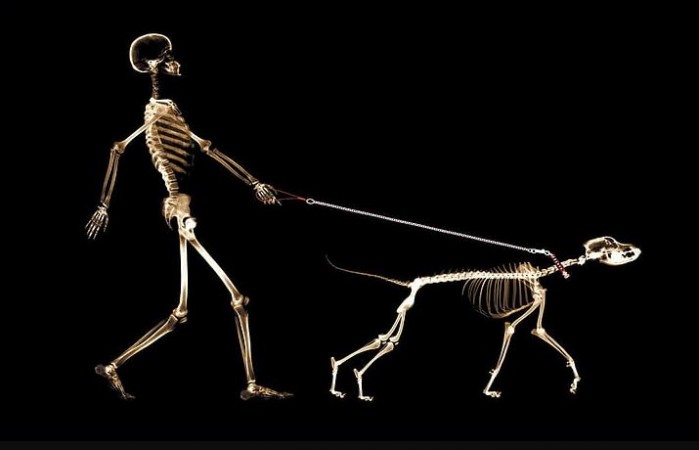
The world of medicine was forever changed by a serendipitous discovery made over a century ago. Wilhelm Conrad Roentgen, a German physicist, accidentally stumbled upon a groundbreaking phenomenon that would pave the way for modern medical imaging. His accidental discovery of X-rays marked the beginning of a new era in healthcare, allowing doctors to see inside the human body without the need for invasive procedures. This article delves into Roentgen's momentous discovery and explores the profound impact X-rays have had on medical diagnostics and beyond.
Wilhelm Conrad Roentgen: The Man Behind X-Rays
Wilhelm Conrad Roentgen was born in Germany in 1845. He showed an early aptitude for science and pursued his education in physics. In 1895, while experimenting with cathode rays, he observed an unusual glow coming from a fluorescent screen in his laboratory. Intrigued by this mysterious phenomenon, Roentgen meticulously investigated further.
The Serendipitous Discovery of X-Rays
As Roentgen continued his experiments, he discovered that a new form of electromagnetic radiation was responsible for the glowing screen. He named this mysterious radiation "X-rays," as "X" signified its unknown nature. His accidental discovery of X-rays revolutionized the field of medical imaging, but it also opened new doors in various other domains.
Understanding X-Rays: How Do They Work?
X-rays are a form of high-energy electromagnetic radiation with shorter wavelengths than visible light. They possess the ability to penetrate various materials, including the human body, to varying degrees based on their density. The interaction of X-rays with the body's tissues creates images that can reveal internal structures, aiding in the diagnosis of numerous medical conditions.
X-Rays in Medical Imaging: Revolutionizing Healthcare
The introduction of X-rays transformed medical diagnosis and treatment approaches. Radiography, the process of capturing X-ray images, allowed physicians to visualize fractures, tumors, and other abnormalities within the body. This non-invasive technique reduced the need for exploratory surgeries and significantly enhanced diagnostic accuracy.
X-Rays and the Diagnosis of Medical Conditions
The diagnostic capabilities of X-rays extended beyond bone-related issues. They became instrumental in identifying various medical conditions, including pneumonia, heart conditions, gastrointestinal disorders, and dental problems. X-rays provided valuable insights into the human anatomy, facilitating targeted treatments and better patient outcomes.
X-Rays in Dentistry: Unraveling Oral Health
Dentistry embraced X-ray technology to uncover hidden dental problems, such as cavities and impacted teeth. Dental X-rays enabled dentists to develop comprehensive treatment plans and intervene before dental issues escalated. This application of X-rays in dentistry marked a pivotal point in oral healthcare, ensuring early detection and prevention.
The Risks and Safety Measures of X-Rays
While X-rays revolutionized medicine, they also raised concerns about potential risks associated with exposure to radiation. Over time, researchers and medical professionals have developed strict safety guidelines to minimize radiation exposure during X-ray procedures, ensuring patient safety remains a top priority.
Advancements in X-Ray Technology
Advancements in X-ray technology have continuously improved imaging quality and reduced radiation doses. Digital radiography and computed tomography (CT) scans have provided enhanced three-dimensional images, revolutionizing medical diagnostics and treatment planning.
The Future of X-Rays: New Horizons in Medical Imaging
The journey of X-rays did not end with Roentgen's discovery. Ongoing research and technological innovations hold promising possibilities for the future of medical imaging. From molecular imaging to targeted therapies, X-rays are set to play an even more vital role in healthcare.
X-Rays Beyond Medicine: Industrial and Security Applications
Apart from healthcare, X-rays found applications in various industries and security measures. In industrial settings, X-rays are used for non-destructive testing of materials, ensuring product quality and integrity. Additionally, security checkpoints at airports and border crossings employ X-rays to inspect baggage and parcels for potential threats.
Ethical Considerations and X-Ray Usage
The widespread use of X-rays has brought forth ethical considerations regarding privacy, informed consent, and radiation exposure. It is crucial for healthcare professionals and policymakers to strike a balance between the benefits of X-ray diagnostics and patient safety.
Addressing Misconceptions about X-Rays
Over the years, misconceptions and myths surrounding X-rays have emerged. Educating the public about the accurate facts of X-rays and dispelling unfounded fears is essential for promoting their safe and effective use in medical practice.
X-Rays in Pop Culture: Impact and Representation
Beyond their scientific significance, X-rays have made their way into popular culture. From superhero origin stories to sci-fi narratives, X-rays have become a symbol of extraordinary abilities and futuristic technology, reflecting their profound impact on human imagination.
Wilhelm Conrad Roentgen's accidental discovery of X-rays unveiled a new realm of possibilities in medical diagnostics and beyond. These high-energy electromagnetic waves have revolutionized healthcare, empowering physicians with non-invasive tools to explore the human body's inner workings. However, responsible usage and safety measures remain paramount in harnessing the full potential of X-rays.
The Genetic Code and Protein Synthesis: Understanding How DNA Codes for Proteins
Infinix to set afloat soon as said by CEO Carl Pei with new Amplification
OnePlus 12R 5G will Facelift in China by Next Year with new Upgrades